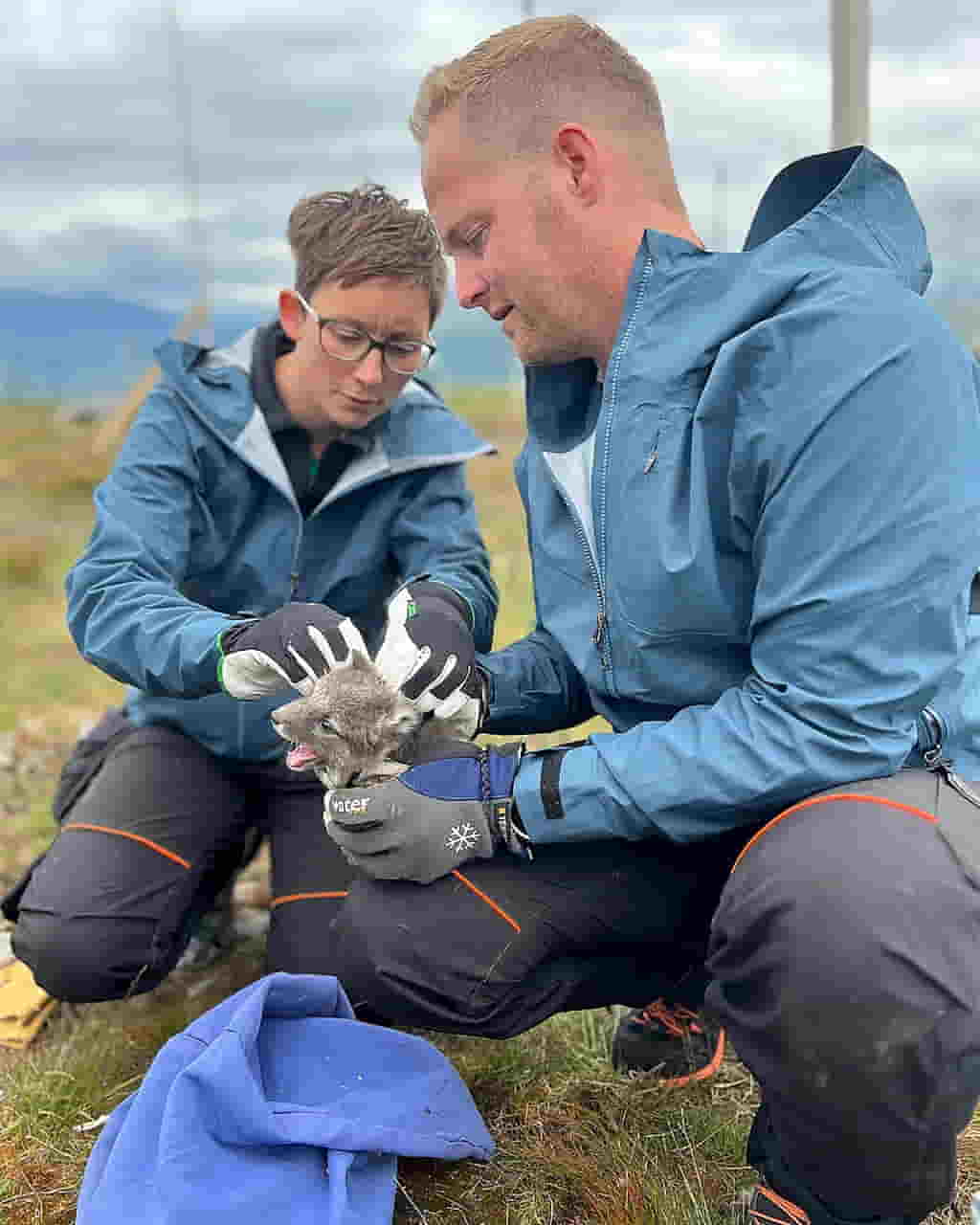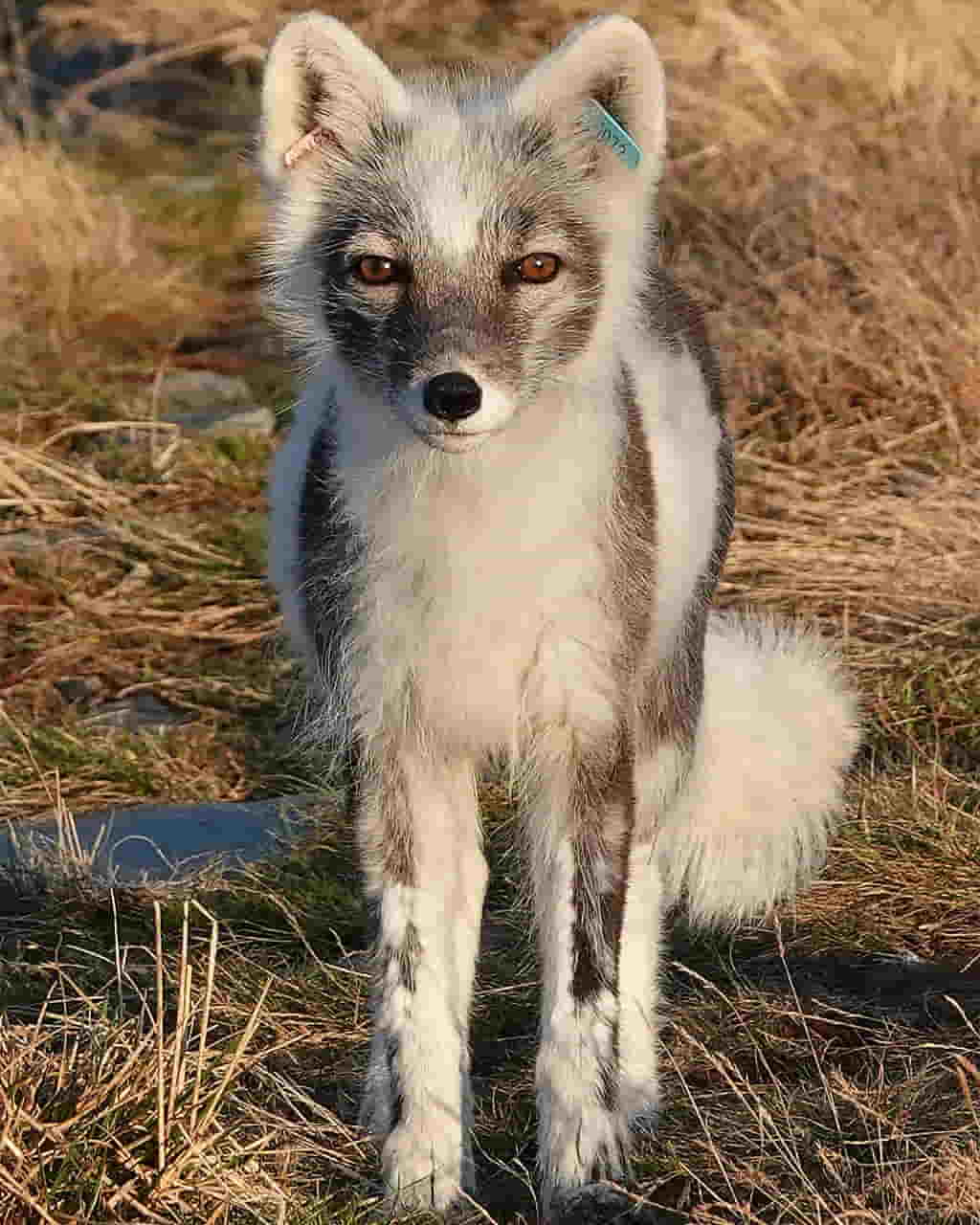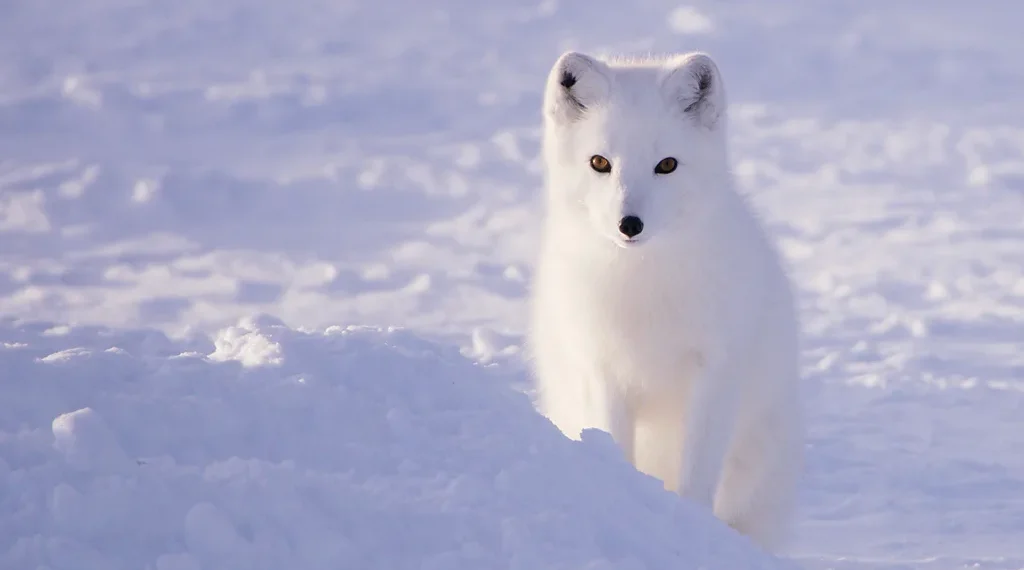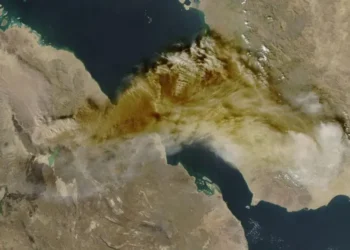“If We Stop Now, They’re Gone Forever”: The Fight to Save Arctic Foxes in the Nordic Countries
Arctic foxes were nearly driven to extinction in Sweden, Norway, and Finland, but dedicated conservation efforts are giving this native species a second chance. Can breeding and feeding projects help these foxes survive for good?
As summer fades into autumn on the Norwegian alpine tundra, the wind howls over the fells, and Arctic foxes remain in their dens. “They’re not stupid,” says biologist Craig Jackson, as he cuts up frozen dog food with a butcher’s knife. Alongside his colleague, Kristine Ulvund, Jackson feeds the foxes—carefully placing chunks of meat into buckets and delivering them to the enclosures. The young foxes frolic across the tundra, blissfully unaware that their survival depends on the fragile efforts to save their population.
Since 2005, the Norwegian Institute for Nature Research (NINA) has been breeding Arctic foxes in captivity as part of a government-funded conservation program. Located near Oppdal, 300km north of Oslo, the program is crucial to saving the species in Fennoscandia—the northern European peninsula that includes Finland, Norway, Sweden, and parts of Russia. This year, 34 pups have been born at the breeding station, and by January, Jackson and Ulvund will release them back into the wild, joining the 465 captive-bred foxes already set free across Norway since the program’s inception.
The Arctic Fox’s Struggle for Survival
Arctic foxes are built for the harshest climates, with short muzzles, warm fur, and foot pads that function as heat exchangers to survive temperatures below -40°C (-40°F). Historically, they roamed across the circumpolar tundra of the Arctic, thriving in regions like Greenland, Canada, Russia, and the Nordic countries. While the species remains abundant in most of its range, the Arctic fox nearly disappeared from Fennoscandia by the early 20th century due to overhunting for their prized pelts. Legal protections in the 1920s came too late to restore their populations, and by 2000, only 40-60 Arctic foxes remained in Sweden and Norway, while Finland had seen none since 1996.
Though the Arctic fox is not threatened in other regions, conservationists emphasize the importance of restoring Fennoscandian populations for ecological and cultural reasons. The Arctic fox plays a vital role in its ecosystem as a keystone species, and its survival is closely linked to the identity of the region’s people.

The Impact of Climate Change and Red Foxes
In recent years, climate change has made things worse for Arctic foxes. Disruptions to lemming populations—critical prey for the foxes—have worsened the situation. Additionally, warmer temperatures have allowed the more aggressive red fox to encroach upon Arctic fox territory, competing for food and resources. “Fennoscandian Arctic foxes heavily depend on lemmings,” explains Dorothée Ehrich, a researcher at the Climate-Ecological Observatory for Arctic Tundra in Tromsø, Norway. The warmer winters caused by climate change make it difficult for lemmings to survive, which, in turn, affects the foxes’ ability to reproduce.
To help the foxes survive, more than 250 feeding stations have been established across Norway, Sweden, and Finland. In Kilpisjärvi, Finland, Tuomo Ollila, a retired wildlife expert, oversees one of these stations. “We give them premium-quality dog food,” he says with a laugh. “In poor rodent years, it helps Arctic foxes survive in optimal breeding habitats.” While lemmings are still the preferred food, supplemental feeding has proven crucial for breeding pairs and their young.
However, the rise of red foxes remains a significant challenge. Larger, stronger, and more aggressive than their Arctic cousins, red foxes often prey on Arctic foxes and spread diseases. To combat this, hunters—both local and government-paid—are tasked with culling red foxes, especially near Arctic fox dens. But this measure is controversial, as red foxes are native to the region.
A Balancing Act: Challenges and Successes
Some see ecological alternatives to red fox culling, such as the return of larger predators like wolves and wolverines. However, the support for sheep grazing in the mountains has made it difficult to reintroduce large predators. “Sheep grazing has strong political support in Norway,” says Ulvund, making it unlikely for large predators to make a significant return.
Without human intervention, experts agree that the Arctic fox may already be extinct in Fennoscandia. However, thanks to concerted conservation efforts, the wild populations of Arctic foxes in Norway, Sweden, and Finland have grown to over 550 individuals. “Our data shows that captive-bred foxes have the same survival and reproduction rates as wild-born foxes,” says Ulvund.
In Finland, the first Arctic fox litter in 26 years was born in 2022, just 19km from a release site in Norway. “The coffee tasted great that morning,” recalls Ollila.
Researchers like Johan Fredrik Wallén, who has studied Arctic foxes in Sweden for nearly 20 years, now often sees them in the wild, a stark contrast to his earlier experiences. But his work is tough, involving long days of fieldwork in harsh conditions—walking 15-20km daily and enduring snow, wind, and cold. “I remember waking up in a tent covered in snow,” he recalls.
The research is vital for understanding the effectiveness of conservation measures. Initially, captive-bred foxes were released in October or November, but now they stay in their enclosures longer to build up fat reserves before being released into the wild.
In northern Norway’s Varanger Peninsula, where red fox culling had been the only conservation measure, the population of Arctic foxes fluctuated drastically. After releasing 67 captive-bred foxes in 2017, the population has rebounded. “Last year alone, over 90 pups were born in Varanger,” says Ehrich.
However, there are risks involved in releasing captive-bred foxes. Introducing foxes from the same breeding pairs can reduce genetic diversity, leading to inbreeding. The focus has now shifted to releasing animals in a way that promotes genetic diversity.

A Collective Success Story
The success of the Arctic fox conservation program is a testament to international cooperation. Norway, Sweden, and Finland have worked together, setting common goals, sharing information, and compiling joint annual reports. “Animals don’t see country borders,” says Wallén. It also helps that the Arctic fox is not a controversial species—many locals view it as a symbol of the pristine Arctic wilderness.
Still, scientists are cautious about relying too heavily on captive breeding. “We can’t rely on captive breeding to save a species,” says Ulvund. “It should only be a last resort.” While the fox population is growing, it remains on life support, and the goal is to reach a sustainable population of at least 2,000 foxes in Fennoscandia. Whether this number will be enough remains uncertain.
Experts like Dominique Berteaux, an ecologist in Canada, warn that continued support may be necessary for the Arctic fox to thrive in Fennoscandia. Without intervention, the population could decline again.
As climate change accelerates, the future of Arctic foxes in Fennoscandia remains uncertain. However, Wallén argues that giving up now would be a mistake. “Arctic foxes have been here since the last ice age,” he says. “If we stop now, they’re gone forever.”
This article was rewritten by JournosNews.com based on verified reporting from trusted sources. The content has been independently reviewed, fact-checked, and edited for accuracy, neutrality, tone, and global readability in accordance with Google News and AdSense standards.
All opinions, quotes, or statements from contributors, experts, or sourced organizations do not necessarily reflect the views of JournosNews.com. JournosNews.com maintains full editorial independence from any external funders, sponsors, or organizations.
Stay informed with JournosNews.com — your trusted source for verified global reporting and in-depth analysis. Follow us on Google News, BlueSky, and X for real-time updates.














